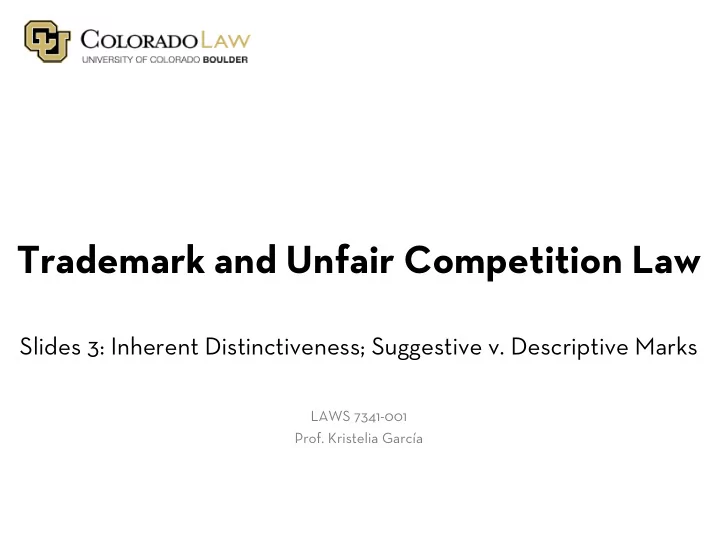

Trademark and Unfair Competition Law Slides 3: Inherent Distinctiveness; Suggestive v. Descriptive Marks LAWS 7341-001 Prof. Kristelia García
Class Outline • Distinctiveness • Suggestive v. Descriptive 2
Distinctiveness Statutory Source: LA § 45: “The term ‘trademark’ includes any word, name, symbol, or device, or any combination thereof…used by a person . . .To identify and distinguish his or her goods , including a unique product, from those manufactured or sold by others and to indicate the source of the goods, even if that source is unknown.” 2 types: 1. Inherent Distinctiveness 2. Acquired Distinctiveness (aka “Secondary Meaning”) 3
Abercrombie & Fitch Co. v. Hunting World, Inc. 4
“Safari” hats Abercrombie & Fitch Hunting World 5
6
7
8
9
The Continuum of Distinctiveness Inherently Distinctive Capable of becoming Never distinctive distinctive Fanciful & Suggestive Descriptive Generic Arbitrary KODAK cameras COPPERTONE BEST BUY Milk, Hat, lotion retail stores Bread, Car APPLE computers 10
The Continuum of Distinctiveness 1. Inherently distinctive marks: --arbitrary marks --fanciful marks --suggestive marks --some unique, eye-catching abstract designs (capable of protection upon use—no secondary meaning required) 2. Marks that are capable of becoming distinctive: --descriptive marks --geographically descriptive marks --surname marks --common or simple abstract designs or colors (only capable of protection upon acquisition of secondary meaning) 3. Marks that are incapable of becoming distinctive: --generic words and symbols (not capable of protection under any circumstances) 11
12
Descriptive v. Suggestive Marks 1. Dictionary: the ordinary significance and meaning of words 2. The imagination test: How much imagination is required on the consumer’s part in trying to cull some indication from the mark about the qualities, characteristics, effect, purpose, or ingredients of the product or service? 3. Competitor need: Are sellers of similar products likely to use, or… 4. Competitor use: … do they actually use the term in connection with their goods? 13
14
15
16
17
18
Recommend
More recommend